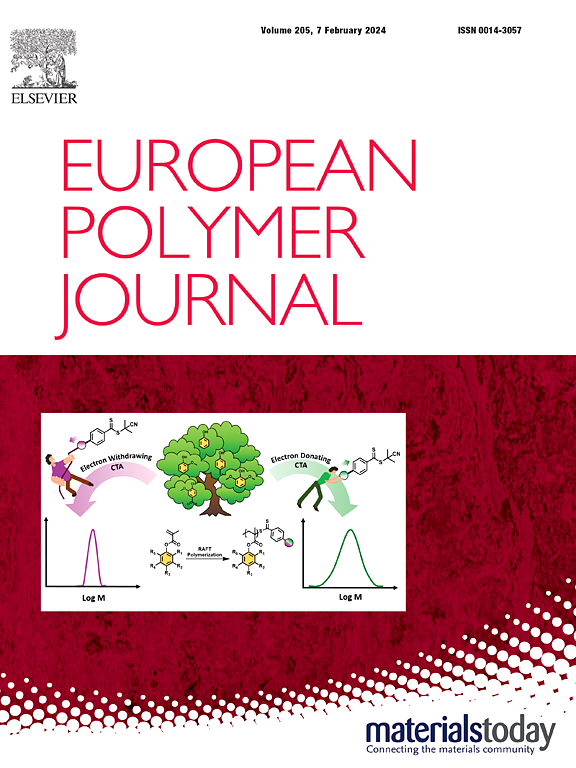Design and synthesis of aliphatic supramolecular polymers featuring amide, urethane, and urea hydrogen bonding units
IF 5.8
2区 化学
Q1 POLYMER SCIENCE
引用次数: 0
Abstract
Functionalisation of polyurethane-urea oligomers with hydrogen bonding amide end groups leads to dramatic thermal, mechanical, morphological, and rheological changes of supramolecular polyurethane elastomers. This study reports the design, synthesis and characterisation of six new aliphatic thermally stable supramolecular polyurethanes (SPUs). It was found that introduction of the amide end groups affords a polymer network that is maintained by dynamic associations within the solid state of the material. Through atomic force microscopy (AFM), the aggregation of hard segments of these phase separated SPU networks was found to be more prominent with the introduction of the amide end groups. The strong hydrogen bonding associations between the amide end groups were complemented by urea-urea and urethane-urethane interactions from the main chains to enhance the self-assembly and phase separation of SPUs and also improve the mechanical, thermal and rheological properties with respect to other SPU elastomers that feature bisamide end groups. These thermally stable phase separated SPUs also displayed remarkable re-adhesive capabilities on both glass and aluminium substrates, for example, SPU2 exhibited unique reusability after seven adhesion cycles.

求助全文
约1分钟内获得全文
求助全文
来源期刊

European Polymer Journal
化学-高分子科学
CiteScore
9.90
自引率
10.00%
发文量
691
审稿时长
23 days
期刊介绍:
European Polymer Journal is dedicated to publishing work on fundamental and applied polymer chemistry and macromolecular materials. The journal covers all aspects of polymer synthesis, including polymerization mechanisms and chemical functional transformations, with a focus on novel polymers and the relationships between molecular structure and polymer properties. In addition, we welcome submissions on bio-based or renewable polymers, stimuli-responsive systems and polymer bio-hybrids. European Polymer Journal also publishes research on the biomedical application of polymers, including drug delivery and regenerative medicine. The main scope is covered but not limited to the following core research areas:
Polymer synthesis and functionalization
• Novel synthetic routes for polymerization, functional modification, controlled/living polymerization and precision polymers.
Stimuli-responsive polymers
• Including shape memory and self-healing polymers.
Supramolecular polymers and self-assembly
• Molecular recognition and higher order polymer structures.
Renewable and sustainable polymers
• Bio-based, biodegradable and anti-microbial polymers and polymeric bio-nanocomposites.
Polymers at interfaces and surfaces
• Chemistry and engineering of surfaces with biological relevance, including patterning, antifouling polymers and polymers for membrane applications.
Biomedical applications and nanomedicine
• Polymers for regenerative medicine, drug delivery molecular release and gene therapy
The scope of European Polymer Journal no longer includes Polymer Physics.
 求助内容:
求助内容: 应助结果提醒方式:
应助结果提醒方式:


